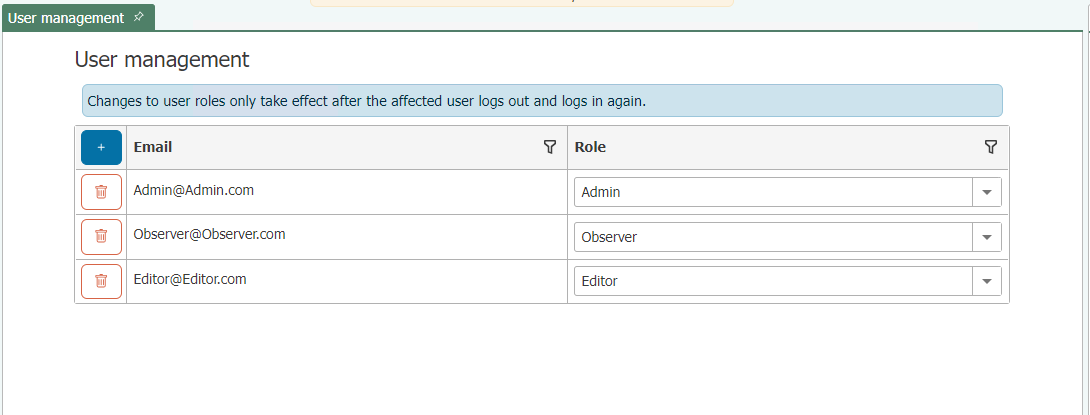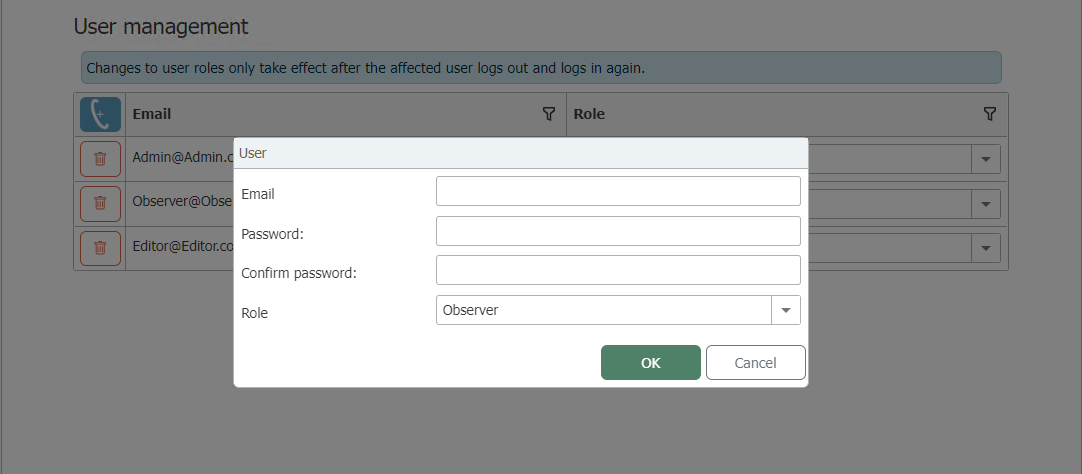User management
In the user management, internal users can be created, deleted, and edited. External users, such as Windows Authentication users and Microsoft Entra ID users (or Azure Ad), are exempted from this process if these integrations have been set up during installation.
Once the initial user creation is done, it will be listed here. Although this user can be deleted or modified, after restarting the management services, it will be restored with the Admin role to prevent complete lockout from the management.

New internal users can be created by clicking on the plus sign at the top left of the table, which opens a new dialog.

Here, email address and password must be provided, with only one user per email address permitted. Additionally, a user role must be selected. If the dialog is confirmed by OK and all entered data is valid, the new user should be visible in the table.
User roles can be changed via the dropdown in the table, and users can be removed using the delete button.
Changes to user roles are not immediate. Existing stored login tokens (saved in browser cookies) remain valid with the old role until they are either deleted or revalidated. This happens through a logout and subsequent login.
Login Options
- Email Address and Password: The classic login option using an email address and a personal password is a widely used and familiar method. Users must enter their email address and associated password to access the OPC Router. This method provides a simple and direct form of authentication.
- Windows User Integration: For integration into existing Windows environments, the OPC Router supports login with Windows user accounts. This allows users to authenticate using their existing Windows credentials without needing separate access credentials for the OPC Router. This option promotes easy and efficient usage in enterprises with a Windows-based IT infrastructure.
- Azure AD / Entra ID: For organizations utilizing cloud-based identity services, the OPC Router offers the option to log in via Azure Active Directory (Azure AD) or Entra ID. This option requires prior configuration during the installation phase of the OPC Router and enables secure and centralized management of user identities and access rights within a cloud infrastructure.
Security Notes:
When accessing the OPC Router from another PC, we strongly recommend enabling the use of HTTPS to encrypt data transmission and ensure communication security. Details on activating HTTPS can be found in the OPC Router installation guide. This measure is particularly important when transferring sensitive data or when accessing via insecure networks, such as the internet.